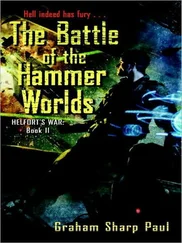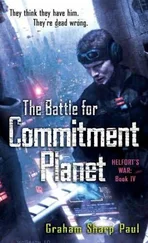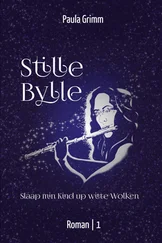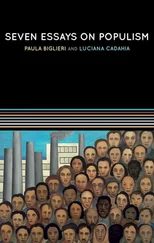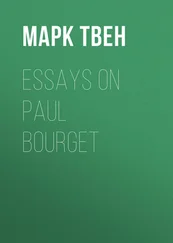Paul Graham - Essays
Здесь есть возможность читать онлайн «Paul Graham - Essays» весь текст электронной книги совершенно бесплатно (целиком полную версию без сокращений). В некоторых случаях можно слушать аудио, скачать через торрент в формате fb2 и присутствует краткое содержание. Жанр: Прочая околокомпьтерная литература, на английском языке. Описание произведения, (предисловие) а так же отзывы посетителей доступны на портале библиотеки ЛибКат.
- Название:Essays
- Автор:
- Жанр:
- Год:неизвестен
- ISBN:нет данных
- Рейтинг книги:4 / 5. Голосов: 1
-
Избранное:Добавить в избранное
- Отзывы:
-
Ваша оценка:
- 80
- 1
- 2
- 3
- 4
- 5
Essays: краткое содержание, описание и аннотация
Предлагаем к чтению аннотацию, описание, краткое содержание или предисловие (зависит от того, что написал сам автор книги «Essays»). Если вы не нашли необходимую информацию о книге — напишите в комментариях, мы постараемся отыскать её.
Essays — читать онлайн бесплатно полную книгу (весь текст) целиком
Ниже представлен текст книги, разбитый по страницам. Система сохранения места последней прочитанной страницы, позволяет с удобством читать онлайн бесплатно книгу «Essays», без необходимости каждый раз заново искать на чём Вы остановились. Поставьте закладку, и сможете в любой момент перейти на страницу, на которой закончили чтение.
Интервал:
Закладка:
4. A new concept of variables.In Lisp, all variables are effectively pointers. Values are what have types, not variables, and assigning or binding variables means copying pointers, not what they point to.
5. Garbage-collection.
6. Programs composed of expressions.Lisp programs are trees of expressions, each of which returns a value. (In some Lisps expressions can return multiple values.) This is in contrast to Fortran and most succeeding languages, which distinguish between expressions and statements.
It was natural to have this distinction in Fortran because (not surprisingly in a language where the input format was punched cards) the language was line-oriented. You could not nest statements. And so while you needed expressions for math to work, there was no point in making anything else return a value, because there could not be anything waiting for it.
This limitation went away with the arrival of block-structured languages, but by then it was too late. The distinction between expressions and statements was entrenched. It spread from Fortran into Algol and thence to both their descendants.
When a language is made entirely of expressions, you can compose expressions however you want. You can say either (using Arc syntax)
(if foo (= x 1) (= x 2))
or
(= x (if foo 1 2))
7. A symbol type.Symbols differ from strings in that you can test equality by comparing a pointer.
8. A notation for codeusing trees of symbols.
9. The whole language always available.There is no real distinction between read-time, compile-time, and runtime. You can compile or run code while reading, read or run code while compiling, and read or compile code at runtime.
Running code at read-time lets users reprogram Lisp's syntax; running code at compile-time is the basis of macros; compiling at runtime is the basis of Lisp's use as an extension language in programs like Emacs; and reading at runtime enables programs to communicate using s-expressions, an idea recently reinvented as XML.
When Lisp was first invented, all these ideas were far removed from ordinary programming practice, which was dictated largely by the hardware available in the late 1950s.
Over time, the default language, embodied in a succession of popular languages, has gradually evolved toward Lisp. 1-5 are now widespread. 6 is starting to appear in the mainstream. Python has a form of 7, though there doesn't seem to be any syntax for it. 8, which (with 9) is what makes Lisp macros possible, is so far still unique to Lisp, perhaps because (a) it requires those parens, or something just as bad, and (b) if you add that final increment of power, you can no longer claim to have invented a new language, but only to have designed a new dialect of Lisp ; -)
Though useful to present-day programmers, it's strange to describe Lisp in terms of its variation from the random expedients other languages adopted. That was not, probably, how McCarthy thought of it. Lisp wasn't designed to fix the mistakes in Fortran; it came about more as the byproduct of an attempt to axiomatize computation.
Why Arc Isn't Especially Object-Oriented
There is a kind of mania for object-oriented programming at the moment, but some of the smartest programmers I know are some of the least excited about it.
My own feeling is that object-oriented programming is a useful technique in some cases, but it isn't something that has to pervade every program you write. You should be able to define new types, but you shouldn't have to express every program as the definition of new types.
I think there are five reasons people like object-oriented programming, and three and a half of them are bad:
Object-oriented programming is exciting if you have a statically-typed language without lexical closures or macros. To some degree, it offers a way around these limitations. (See Greenspun's Tenth Rule.)
Object-oriented programming is popular in big companies, because it suits the way they write software. At big companies, software tends to be written by large (and frequently changing) teams of mediocre programmers. Object-oriented programming imposes a discipline on these programmers that prevents any one of them from doing too much damage. The price is that the resulting code is bloated with protocols and full of duplication. This is not too high a price for big companies, because their software is probably going to be bloated and full of duplication anyway.
Object-oriented programming generates a lot of what looks like work. Back in the days of fanfold, there was a type of programmer who would only put five or ten lines of code on a page, preceded by twenty lines of elaborately formatted comments. Object-oriented programming is like crack for these people: it lets you incorporate all this scaffolding right into your source code. Something that a Lisp hacker might handle by pushing a symbol onto a list becomes a whole file of classes and methods. So it is a good tool if you want to convince yourself, or someone else, that you are doing a lot of work.
If a language is itself an object-oriented program, it can be extended by users. Well, maybe. Or maybe you can do even better by offering the sub-concepts of object-oriented programming a la carte. Overloading, for example, is not intrinsically tied to classes. We'll see.
Object-oriented abstractions map neatly onto the domains of certain specific kinds of programs, like simulations and CAD systems.
I personally have never needed object-oriented abstractions. Common Lisp has an enormously powerful object system and I've never used it once. I've done a lot of things (e.g. making hash tables full of closures) that would have required object-oriented techniques to do in wimpier languages, but I have never had to use CLOS.
Maybe I'm just stupid, or have worked on some limited subset of applications. There is a danger in designing a language based on one's own experience of programming. But it seems more dangerous to put stuff in that you've never needed because it's thought to be a good idea.
Taste for Makers
I was talking recently to a friend who teaches at MIT. His field is hot now and every year he is inundated by applications from would-be graduate students. "A lot of them seem smart," he said. "What I can't tell is whether they have any kind of taste."
Taste. You don't hear that word much now. And yet we still need the underlying concept, whatever we call it. What my friend meant was that he wanted students who were not just good technicians, but who could use their technical knowledge to design beautiful things.
Mathematicians call good work "beautiful," and so, either now or in the past, have scientists, engineers, musicians, architects, designers, writers, and painters. Is it just a coincidence that they used the same word, or is there some overlap in what they meant? If there is an overlap, can we use one field's discoveries about beauty to help us in another?
For those of us who design things, these are not just theoretical questions. If there is such a thing as beauty, we need to be able to recognize it. We need good taste to make good things. Instead of treating beauty as an airy abstraction, to be either blathered about or avoided depending on how one feels about airy abstractions, let's try considering it as a practical question: how do you make good stuff?
If you mention taste nowadays, a lot of people will tell you that "taste is subjective." They believe this because it really feels that way to them. When they like something, they have no idea why. It could be because it's beautful, or because their mother had one, or because they saw a movie star with one in a magazine, or because they know it's expensive. Their thoughts are a tangle of unexamined impulses.
Читать дальшеИнтервал:
Закладка:
Похожие книги на «Essays»
Представляем Вашему вниманию похожие книги на «Essays» списком для выбора. Мы отобрали схожую по названию и смыслу литературу в надежде предоставить читателям больше вариантов отыскать новые, интересные, ещё непрочитанные произведения.
Обсуждение, отзывы о книге «Essays» и просто собственные мнения читателей. Оставьте ваши комментарии, напишите, что Вы думаете о произведении, его смысле или главных героях. Укажите что конкретно понравилось, а что нет, и почему Вы так считаете.




